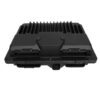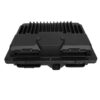Is Your Truck Running Rough? It Could Be The PCM.
If you’re dealing with frustrating, hard-to-diagnose issues on your 1998-1999 GM truck or van, the Powertrain Control Module (PCM) is a likely culprit. As the central computer of your vehicle, the PCM controls everything from fuel injection and ignition timing to transmission shifting. When it starts to fail, it can cause a cascade of problems that can be maddening to pinpoint, leaving you stranded or with a vehicle that’s unreliable and inefficient.
Symptoms of a Failing Powertrain Control Module
- ✔ Persistent Check Engine Light (CEL) that won’t go away, especially with communication-related codes (U-codes).
- ✔ Unexplained engine stalling, stumbling, or misfiring, even after replacing plugs and wires.
- ✔ Harsh, erratic, or delayed shifting from your automatic transmission.
- ✔ A no-start condition where the engine cranks over but refuses to fire up.
- ✔ A sudden and significant drop in fuel economy.
- ✔ Failure to pass an emissions test due to monitor readiness issues.
The Direct-Fit Solution: A Programmed 1998-1999 Chevrolet 2500 PCM
Don’t let a faulty computer sideline your workhorse. This genuine, used OEM Powertrain Control Module, part number 9355699, is the reliable and cost-effective solution to restore your vehicle’s performance and dependability. The most critical part of the replacement process is the programming, and we handle that for you. Before we ship your part, we flash it with the latest GM-certified software updates and program it specifically to your vehicle’s unique Vehicle Identification Number (VIN). This ensures that when it arrives, it’s a true plug-and-play installation, eliminating the need for an expensive trip to the dealership for programming.
Why a VIN-Programmed Module is Essential
Simply swapping a used computer from another vehicle won’t work. Modern vehicles use complex anti-theft systems (like GM’s Passlock/VATS) that are tied to the PCM and the VIN. Our programming service correctly syncs this module to your truck, ensuring it will start and run correctly. We take your provided VIN to match all factory-installed options, engine parameters, and transmission calibrations, making the installation process as seamless as possible.
Guaranteed Compatibility
This electronic control module is a direct replacement for a wide range of 1998-1999 General Motors trucks and vans. It is compatible with multiple service numbers, including 09355699, 16266645, 16250279, 16258815, and 09366810. Whether you have a Chevrolet 1500, a GMC Savana Van, a Cadillac Escalade, or a Chevy S10, if your original module carries one of these part numbers, this is the correct replacement for you. Please verify your original part number to ensure a perfect match.
Frequently Asked Questions
How do I provide my vehicle’s VIN?
After you complete your purchase, you can add your 17-digit VIN to the order notes or send it to us in a message. We cannot ship the module until we have your VIN to perform the programming.
Is this part truly plug-and-play?
Yes, because we program the module to your specific VIN, it arrives ready to be installed without requiring a trip to the dealer for further flashing. In some cases, a simple security relearn procedure may be needed, which can be done without special tools.
What if my original part number is slightly different?
This module is the correct service replacement for several part numbers, including 16266645 and 16250279. As long as your original part number is on the cross-reference list in our description, this unit will function correctly in your vehicle.
This is a used part. How can I be sure it’s reliable?
This is a genuine OEM part sourced from a salvaged vehicle. Each module is inspected and verified to be in good working condition before being programmed and shipped. This provides OEM-level reliability without the high cost of a new-from-dealer part.
Do I need to do anything before installing the new PCM?
Always disconnect the vehicle’s battery before removing the old PCM or installing the new one. It is also a good practice to identify and repair the original cause of failure (e.g., a shorted sensor or wire) if known, to protect the replacement module.


